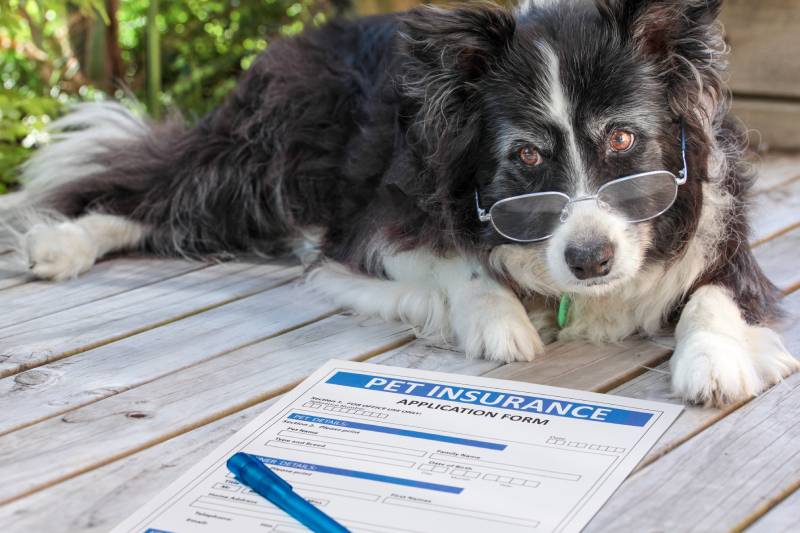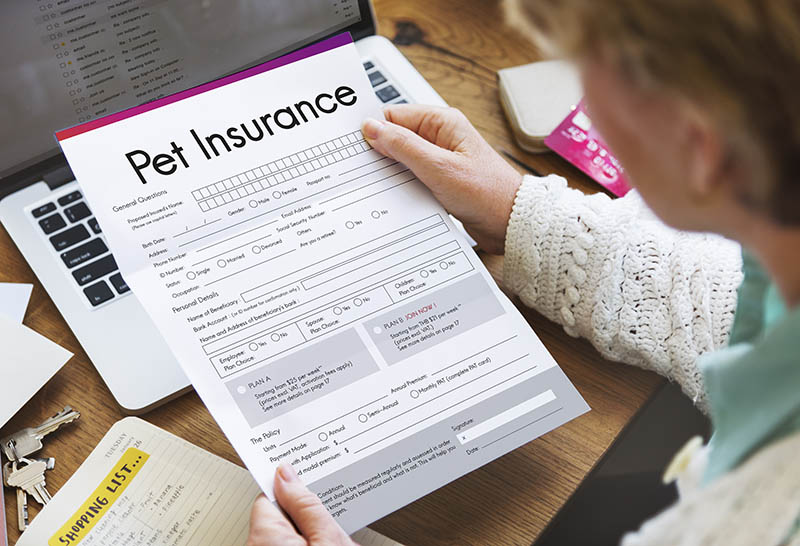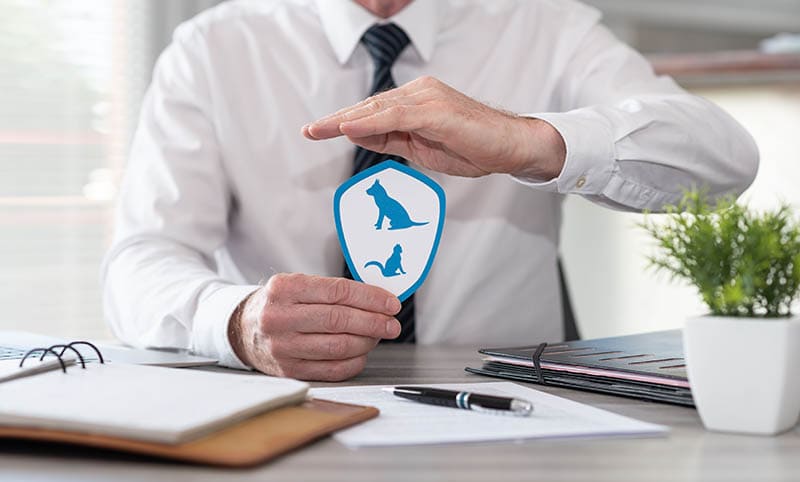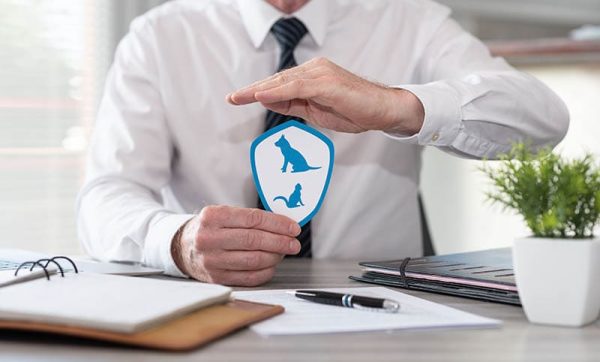Click to Skip Ahead
Note: This article’s statistics come from third-party sources and do not represent the opinions of this website.
The number of pets in Australia has steadily increased over the years, and more pet owners have begun to see their pets as a part of their family. Considering how important our pets are to us, it is no surprise that the pet insurance industry in Australia continues to grow.
If you are interested in learning more about Australian pet insurance statistics, including statistics regarding costs and demographics, this article has your curiosities covered. Whether you’re a pet parent, a member of the pet insurance industry, or simply someone interested in learning more, you’ll want to read over these surprising statistics.
Top 12 Australia Pet Insurance Statistics
- 23% of Australian pet owners report that they have not taken their pet to the vet within the year.
- Between 2022 and 2027, the veterinary health market is expected to increase by 9.75%.
- Veterinary consultations are the most common veterinary expenses, making up 23% of all instances.
- 60% of pet owners with pet insurance believe that their pet insurance is more than worth the cost.
- Australians can expect to pay an average of $500–$600 per veterinary visit.
- People with cats may pay around $1,000 in pet insurance each year, whereas dog owners can expect double that amount.
- $4.7 billion was spent on veterinary care in Australia in 2022.
- Australians spent $1.1 billion on pet insurance in 2022.
- On average, the most expensive veterinary treatment in Australia for dogs is for Brachycephalic Airway Obstruction Syndrome (BAOS), costing an average of $16,926.
- When it comes to veterinary visits, there is an average difference of $82 spent between pet owners of the Boomer generation and Generation Z.
- Pet insurance ownership varies between dog and cat owners, with 30% of dog owners and 21% of cat owners having their pets enrolled.
- Pet owners in Victoria, Australia, spend $200 more on average per vet visit.

General Australia Pet Insurance Statistics
1. 23% of Australian pet owners report that they have not taken their pet to the vet within the year.
(Statista)
Less than a quarter of pet owners in Australia report not taking their pets to the vet during 2022. That means that over three-quarters of pet owners have gone to the vet; consequently, over three-quarters of pet owners in Australia have had veterinary bills sent their way. Only 15% report that they have taken their pet once, meaning most pet owners had repeat visits to the vet throughout the year.

2. Between 2022 and 2027, the veterinary health market is expected to increase by 9.75%.
(Mordor Intelligence)
The market value for veterinary healthcare in Australia is expected to grow steadily over the next five years. While COVID-19 played a significant role in this growth (due to the spike in pet ownership during the earlier points in the pandemic), much of the continued growth can be attributed to key investments from large corporations, such as Merck Sharp & Dohme Corp.
3. Veterinary consultations are the most common veterinary expenses, making up 23% of all instances.
(Animal Medicine Australia)
Consultations make up nearly a quarter of vet visits for both dogs and cats. For dogs, surgery is the second-most common expense, coming in at 14% of all visits. For cats, the next in line is a tie between after-hours emergency visits and illnesses, which are nearly as common as consultations at 21%.

4. 60% of pet owners with pet insurance believe that their pet insurance is more than worth the cost.
(Finder)
The number of claims that pet parents make on their pet insurance has been rising in recent years. Much of this is due to the effects of COVID-19, which put people and their pets in the same room for longer periods than ever before. With this prolonged exposure, pet owners were likelier to notice something amiss with their pets and take them to the vet. As the number of vet visits increases, the importance of pet insurance is becoming more widely recognized.
Pet Insurance Statistics Regarding Costs
5. Australians can expect to pay an average of $500 – $600 per veterinary visit
(Statista)
Several hundred dollars per veterinary visit is no number to scoff at. Since most pet owners in Australia take their pets to the vet more than once per year, that can mean they are billed for thousands of dollars. When it comes to more expensive treatments, pet owners could even expect a bull as large as $23,000.

6. People with cats may pay around $1,000 in pet insurance each year, whereas dog owners can expect double that amount.
(RSPCA)
Cat owners spend an average of $962 on veterinary expenses per year, whereas dog owners spend around $1,627 each year. These numbers are not surprising, considering that Australian pet owners spent around $13 billion on their pets in 2019.
7. $4.7 billion was spent on veterinary care in Australia in 2022.
(Animal Medicine Australia)
Pet owners in Australia spent $4.7 billion on veterinary care in 2022, making it the second-most common expense following pet food ($17.1 billion). Pet healthcare products are another hot item on the market, as pet owners spent $2.9 billion on such products during the year.
8. Australians spent $1.1 billion on pet insurance in 2022.
(Animal Medicine Australia)
$1.1 billion was spent on pet insurance, making it Australia’s sixth-largest pet care expense. Certain traits may make a person more likely to enroll their pet in pet insurance, such as living in a city, having a higher income and steady employment, earning a higher education, and having experience owning pets.

9. On average, the most expensive veterinary treatment for dogs in Australia is for Brachycephalic Airway Obstruction Syndrome (BAOS), costing an average of $16,926.
(RSPCA)
Veterinary treatment is costly, which is evident by looking at the average price of treatment for BAOS. With an average of nearly $17,000, this treatment could easily break the bank. The second most expensive treatment is for cruciate disease ($15,582), while the third is for mast cell tumors ($8,184).
Pet Insurance Demographics
10. When it comes to veterinary visits, there is an average difference of $82 spent between pet owners of the Boomer generation and Generation Z.
(Finder)
Generation Z Pet owners spend more on their pets per visit. An average of $630 per visit is expected from Generation Z pet parents, whereas the other generations pay slightly less. Generation Y pays around $609 per visit, Generation X pays around $582, and Boomers pay about $548.

11. Pet insurance ownership varies between dog and cat owners, with 30% of dog owners and 21% of cat owners having their pets enrolled.
(RSPCA)
From 2019, 30% of all pet care-related expenses were funneled toward pet insurance and other miscellaneous costs. 30% of dog owners enrolled their pets in pet insurance, whereas 21% of cat owners enrolled theirs.
12. Pet owners in Victoria, Australia, spend $200 more on average per vet visit.
(Finder)
Your pet’s healthcare costs may vary depending on where you are in Australia. Those living in Victoria spend the most on veterinary visits, averaging around $724 each time. This is followed by South Australia, with $574 per visit, Queensland ($492), and New South Wales ($450). There is limited information on the other regions of Australia.
Frequently Asked Questions About Australian Pet Insurance
What Does Pet Insurance in Australia Cover
What your pet insurance will cover depends largely on the policy you pick. Basic insurance policies will only cover accidents, but comprehensive ones will cover illnesses and accidents.
(RSPCA)

How to Pick Pet Insurance
Choosing the right pet insurance for you and your pet can be tricky. The insurance world can often feel like a maze, especially if you don’t know what to look for. To get started, consider the company’s reputation and ease of use.
The reputation of a pet insurance company is a great way to determine how helpful it will be in a crisis. If several users have heaps of praise for a particular company, that can indicate that they are supportive when you and your pet are in need. On the other hand, if you can only find negative reviews of a company, that may be a sign that they are not very helpful when you need them to be.
A company’s ease of use is another critical matter to consider. If their policies are easy to find, understand, and handle, your pet insurance experience is much more likely to be a positive one. On the other hand, if their plans are a hassle to get through, you’re much more likely to be adding extra stress to your pet’s veterinary visits.
Of course, consider which services you want coverage for. If your pet has special needs, you will want to verify that the policy is prepared to help you cover those costs.
(Pet Insurance Australia)
How Much Money Can You Get Back from Pet Insurance?
It is challenging to determine the exact amount that you will be able to see returned to you. That is because the reimbursement amount depends on what you want to be reimbursed for, how much you want to be reimbursed for, and your policy agreement. If your pet insurance policy does not cover what you need reimbursement for, you will not get any costs covered.
The reimbursement rate will determine how much of a refund you are eligible for. For instance, if your reimbursement rate is 85%, you qualify for up to an 85% reimbursement on your veterinary expenses.
(Pet Secure)
Why Do Some Pet Parents Avoid Pet Insurance?
With all of the benefits of pet insurance, some may wonder why other pet owners aren’t jumping on the bandwagon. The most common reason uninsured pet owners cite is the pet insurance’s lack of value. 47% of dog owners and 48% of cat owners say that they do not see pet insurance as worthwhile.
The other common reasons for avoiding pet insurance include the costs (43% for dog owners and 42% for cat owners) and a lack of research or awareness of pet insurance (18% for dog owners and 16% for cat owners).
(Pet Secure)
Conclusion
Although pet insurance is not new, it is still considered somewhat unique in Australia. As the number of pet owners increases, the need for proper veterinary care will also increase, likely leading to a rise in pet insurance enrollment. Being aware of the current statistics surrounding pet insurance is the best way to keep up with the recent shifts and trends.
Featured Image Credit: thodonal88, Shutterstock












